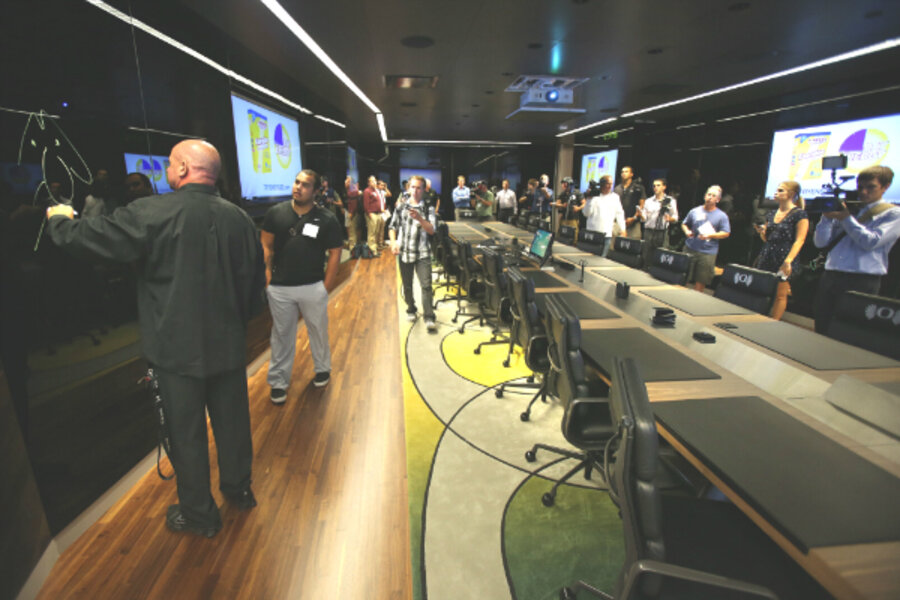The University of Oregon football program has been a trend-setter with its futuristic uniform fashions, but the school’s football facilities have lagged behind until now. In late July, the Ducks opened a new 145,000-square-foot Football Performance Center that is as impressive as any such complex in the country and, by design, more mysterious.
The building is cloaked in dark black glass to give it a “stealth” quality, according to Gene Sandoval, a design partner with ZGF Architects LLP. “It’s about the University of Oregon football being this mysterious, high-tech, intimidating program.“ The innovative design is a fusion of large boxes meant to symbolize all the different “components” that have to come together for a large football program to achieve success.
Chip Kelly, the coach during the university’s recent renaissance, has left to assume the reins of the NFL’s Philadelphia Eagles. But the $68 million Football Performance Center is sure to continue attracting top prospects with everything from Italian marble showers to enough TV monitors for NASA’s Mission Control.
As with the Ducks' jazzy uniforms, a main mover and shaker behind the construction of the new complex is Nike chairman Phil Knight, an Oregon alum.







